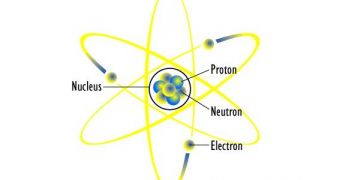A group of physicists at the University of Otago in New Zealand announce the development of a new instrument that allows for the splitting of very small clouds of ultracold atoms. The resulting structures can then be smashed into each other, in a process similar to what goes on in the Large Hadron Collider. This is the first time this capability has been demonstrated, the team explains.
Investigators needed to push the limits of current quantum technology further than ever before in order to create the new instrument, which is basically a set of steerable optical tweezers that use laser beams to break apart the atom clouds. Optical tweezers is the common name given to devices that use light to trap and manipulate structures at an extremely small scale, such as atoms and molecules.
Lead study researcher Dr. Niels Kjaergaard says that the new method will enable physicists to determine how atoms interact at very low temperature levels, of less than one millionth of a degree above absolute zero (−273.15°C or −459.67°F). Achieving this level of cold is extremely difficult, since no object exists in the Universe at 0 Kelvin.
The Otago optical tweezers could from now on be used to develop new technologies for probing and imaging very small structures and molecules. Additionally, scientists imagine a scenario where new sensors are used to map even the smallest variations that develop in magnetic fields. Details of the study were published in the April 1 issue of the scientific journal Optics Letters.
One of the experiments the team conducted involved using the laser-based optical tweezers to break apart a cloud of ultracold rubidium atoms. A total of 32 smaller clouds were obtained in this manner, spread out over about half a centimeter (0.2 inches). Both horizontal and vertical steering laser beams were used to obtain this arrangement, the team explains.
“This sort of precise control of these atoms is like being able to pull a delicate snowflake into two clean halves with your bare hands. It’s quite remarkable that we are able to manipulate such minute and fragile samples while moving them such a comparatively large distance,” says Dr. Kjaergaard.
Lasers also interacted with a series of carefully-controlled traveling acoustic waves in order to break apart the atom clouds and move the daughter clouds around. The same approach that allowed for the splitting of the clouds was used to smash them together after the control capability was demonstrated.
“Tongue-in-cheek, we like to refer to our setup as the ‘Littlest Hadron Collider.’ In some ways it’s the complete opposite of what is the world’s largest and most powerful particle collider, because instead of using extreme acceleration, we smash our atom clouds together at a pedestrian pace of up to a meter per second,” Kjaergaard concludes.

 14 DAY TRIAL //
14 DAY TRIAL //